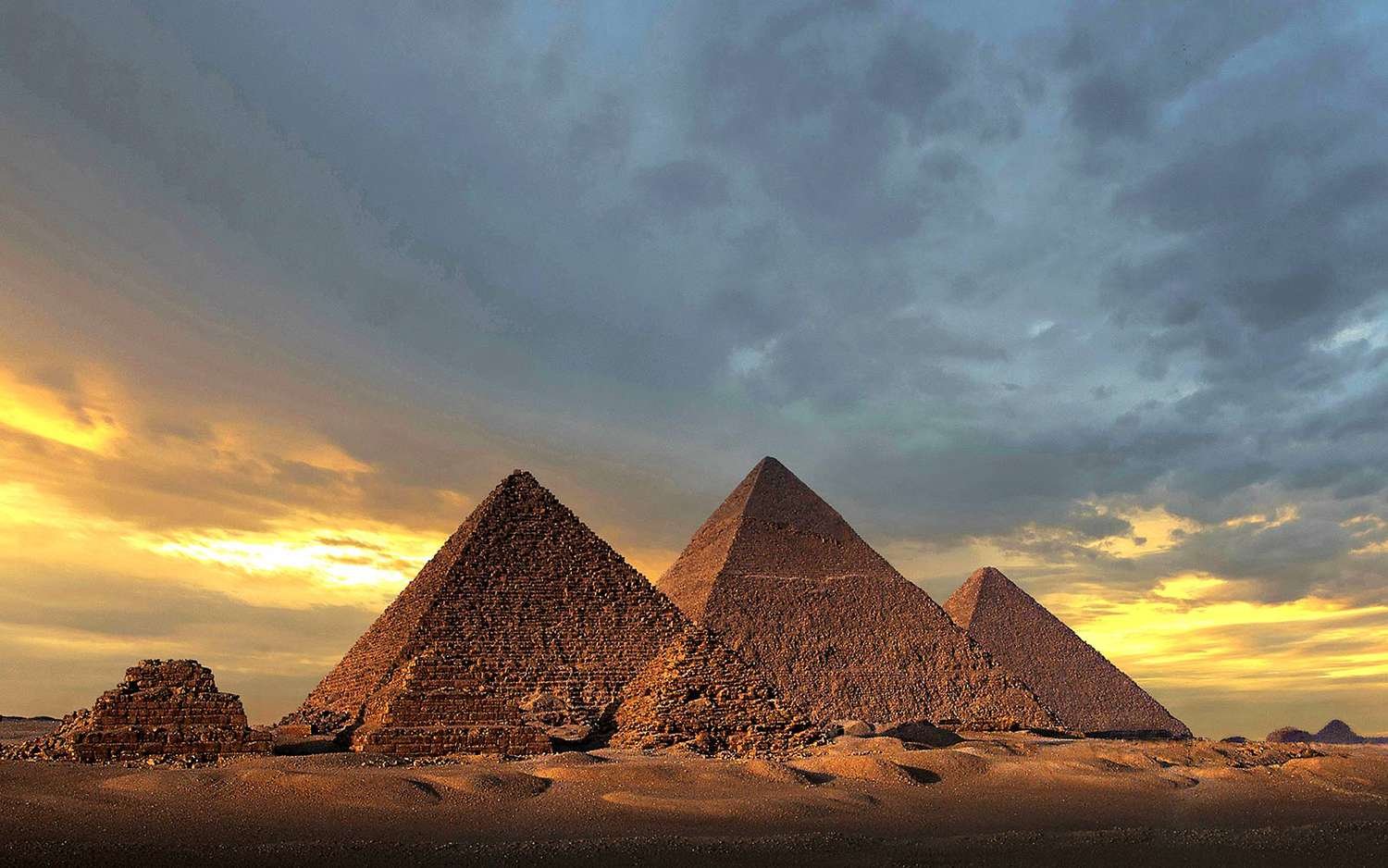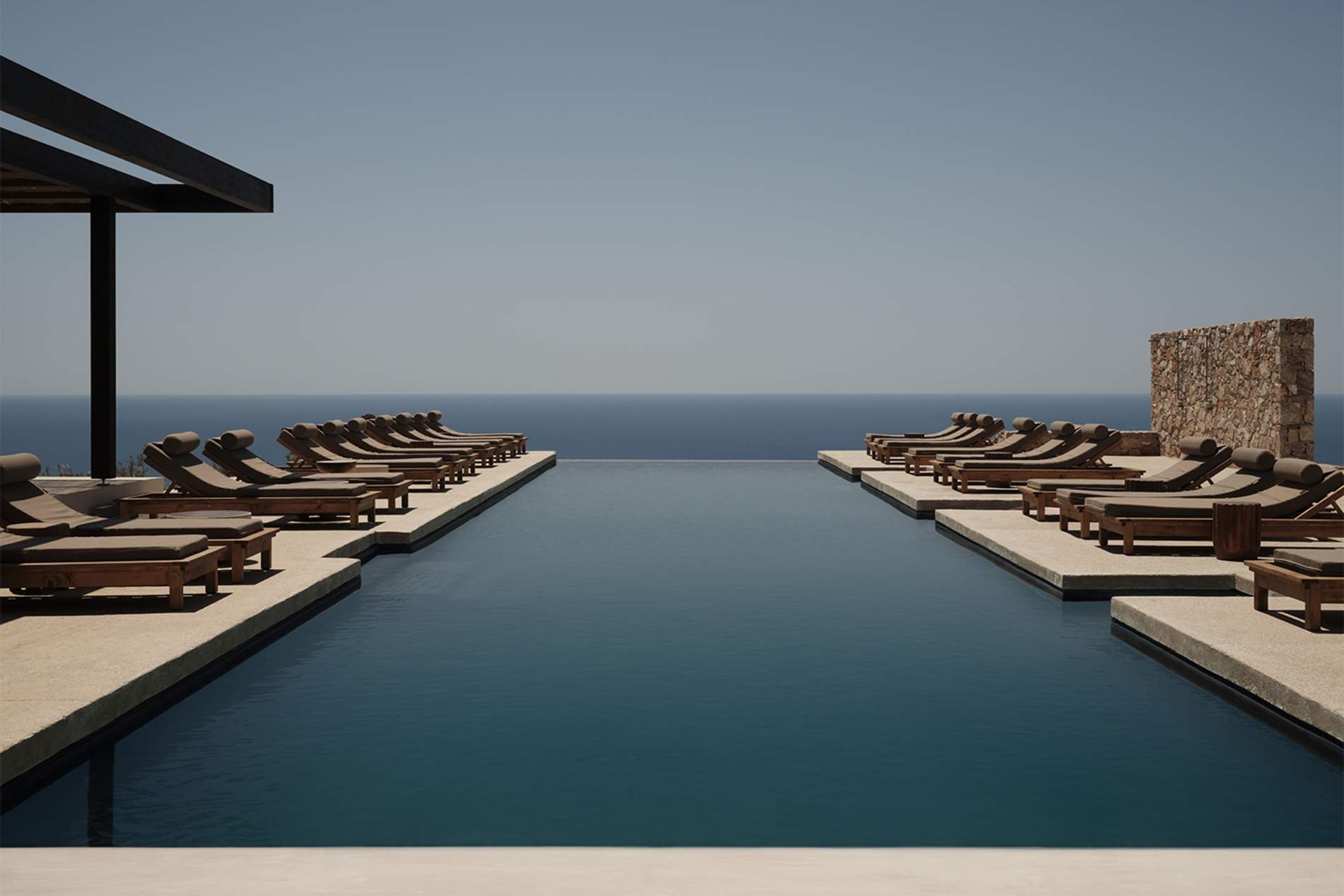UNESCO World Heritage Sites On My Must-See List
As someone who loves diving into history, culture, and learning everything from architecture to design and everything in between, it’s really not a surprise that the UNESCO World Heritage Sites would influence my travel bucket list. Honestly, if there is something that is at the very top of my travel goals, its probably a few of these sites (and a couple I just learned about in the process of this post). But what’s the big deal? These sites aren’t just places; they are windows into the past. They showcase the extraordinary achievements of humanity and nature. From architectural wonders to the most breathtaking landscapes, each and every site has a story worth exploring.
What are world heritage sites?
World Heritage Sites are landmarks or areas recognized by UNESCO or United Nations Educational, Scientific and Cultural Organization, for their cultural, historical, scientific, or natural significance. The World Heritage designation aims to protect and preserve these sites for future generations.
The Process behind the list
For a site to become a World Heritage site, it must meet strict criteria demonstrating outstanding universal value. Countries nominate sites, which are then evaluated by international experts and committees. The designation isn’t just a label-it brings with it international attention and resources for conservation.
Why they matter
World Heritage Sites remind us of the interconnectedness of human history and the planet’s natural wonders. They are living museums, offering lessons in architecture, ecology, and the resilience of cultures.
Now that you know what they are and why they matter, here are a few that have made their way to my travel bucket list.
Chapelle Notre-Dame du Haut by Le Corbusier
Ronchamp, France
Year Recognized: 2016
Perched on a hill in Ronchamp, France, Le Corbusier’s Chapelle Notre-Dame du Haut (1954) is a modern architectural marvel. Its organic shapes, dramatic curves, and interplay of light and shadow redefine religious architecture. The chapel’s asymmetrical roof and stark white walls evoke a sense of spirituality and peace, while its minimalist design highlights the genius of Le Corbusier. A pilgrimage site for architecture enthusiasts, this masterpiece continues to inspire awe with its timeless elegance.
Pyramids of Giza
Egypt
Year Recognized: 1979
The Pyramids of Giza are among the most recognizable landmarks in the world, and for good reason. Constructed over 4,500 years ago as tombs for pharaohs, they are architectural and engineering marvels. The complex includes the Great Pyramid of Khufu, the Sphinx, and smaller pyramids for queens. As the last surviving wonder of the ancient world, the site represents the ingenuity of ancient Egyptian civilization. Visiting Gaza is a humbling experience that connects travelers to humanity’s enduring quest for greatness. It’s been a must-see on my travel list forever.
Le Colline del Prosecco di Conegliano e Valdobbiadene
Italy
Year Recognized: 2019
The rolling hills of Conegliano and Valdobbiadene in northern Italy are the heart of Prosecco production. The landscape with its terraced vineyards and lush greenery represents centuries of sustainable agricultural practices. The region’s sparkling wine is celebrated worldwide, and visitors can enjoy wine tastings while admiring the picturesque countryside. A visit to these hills is not just about wine but also about experiencing the dedication and tradition that makes this region unique.
Jaipur City
India
Year Recognized: 2019
Jaipur, known as the Pink City, is a dazzling blend of history, architecture, and vibrant culture. It’s famed for its distinct terracotta-pink buildings, a tradition dating back to 1876 when the city was painted to welcome Prince Albert. Key attractions include the Hawa Mahal (Palace of Winds), the sprawling Amber Fort, and the City Palace. Jaipur’s bustling bazaars offer a sensory overload of colors, sounds, and smells, with everything from textiles to spices on display. Jaipur is a treasure trove of history, architecture, and culture.
Eise Eisinga Planetarium
Franeker, Netherlands
Year Recognized: 2023
The Eise Eisinga Planetarium in Franeker is the oldest working planetarium in the world, built in the late 18th century. This UNESCO-listed marvel features a stunning royal blue orrery, meticulously crafted to model the solar system using traditional mechanics. Eisinga, a wood carder by trade, constructed this planetary model in his living room, demonstrating incredible ingenuity and precision. Visitors can witness this functional masterpiece and learn about the intersection of science, art, and craftsmanship.
Skogskyrkogården by Gunnar Asplund and Sigurd Lewerentz
Stockholm, Sweden
Year Recognized: 1994
Skogskyrkogården, or the Woodland Cemetery, blends natural beauty and architectural ingenuity. Designed by Gunnar Asplund and Sigurd Lewerentz in the early 20th century, this Stockholm landmark was chosen for its groundbreaking integration of the landscape with cemetery design. The serene grounds featuring rolling hills, tall pine trees, and minimalist chapels, creating a meditative environment. Skogskyrkogården reimagines how cemeteries can reflect nature, life, and the passage of time, making it a profound and contemplative destination.
Dessau Bauhaus by Walter Gropius
Dessau, Germany
Year Recognized: 1996
The Bauhaus in Dessau, designed by Walter Gropius between 1925 and 1926, revolutionized modern architecture and design. This building serves as the epicenter of the Bauhaus movement, embodying its principles of functionality and aesthetic simplicity. Its famous glass curtain wall reveals the building’s structural elements, a hallmark of Bauhaus ideology. Today, visitors can explore the restored site, attend design workshops, and learn about the profound impact of the Bauhaus on architecture, art, and design. My absolute dream.
Lençóis Maranhenses National Park
Brazil
Year Recognized: 2024
A striking and surreal natural wonder, Lençóis Maranhenses National Park in Northeastern Brazil is unlike any other desert landscape. Characterized by its endless stretches of white sand dunes interspersed with crystal-clear lagoons, the park transforms during the rainy season as water fills the valleys between the dunes. Visitors can explore the otherworldly terrain by foot, 4x4 vehicles, or boat tours, making it great for eco-tourists. Its stunning contrasts of blue and white create a photographer’s paradise and an unforgettable experience for nature lovers.
Palladian Villas of Veneto by Andrea Palladio
Veneto, Italy
Year Recognized: 1994
Andrea Palladio’s villas in Veneto, Italy, set the standard for neoclassical architecture of the 16th century. Influenced by ancient Roman design, Palladio created elegant country homes that emphasized symmetry, proportion, and harmony with the surrounding landscape. These villas include masterpieces like Villa Rotonda and Villa Barbaro, showcasing Palladio’s revolutionary use of columns, porticos, and open layouts. A visit to these villas offers an insight into Palladio’s genius and his enduring influence on global architecture.
Bom Jesus do Monte Sanctuary
Braga, Portugal
Year Recognized: 2019
Perched atop a hill in Braga, Portugal, the Bom Jesus do Monte Sanctuary is a Baroque masterpiece and spiritual haven. Its iconig zigzagging staircase, known as the Via Crucis, is a pilgrimage route with chapels depicting the Passion of Christ along the way. In addition to tis cultural and architectural significance, the sanctuary offers breathtaking views and a sense of serenity. The cathedral at the summit is a reward for the faithful - and those who appreciate historical artistry.
Works of Antoni Gaudí
Spain
Year Recognized: 1984
Antoni Gaudí’s iconic works in Barcelona are a feast for the eyes and a testament to his imaginative genius. From the towering spires of La Sagrada Familia to the whimsical mosaics of Park Güell and the flowing forms of Casa Batlló, Gaudeí’s architectural style defies convention. These works were chosen for embodying the Modernisme movement, blending natural forms with technical innovation. Visiting these sites is an immersive journey through creativity, offering a glimpse into a world where art and architecture merge seamlessly. As someone who loves design and art, it seems like the perfect place to embrace surreal beauty!
Vatnajökull National Park
Iceland
Year Recognized: 2019
Vatnajökull National Park, encompassing nearly 14% of Iceland, is a dramatic landscape of glaciers, volcanoes, and ice caves. The park is home to Europe’s largest glacier, Vatnajökull, and active volcanoes like Greísvötn. This “Land of Fire and Ice” is a testament to nature’s extremes, offering otherworldly landscapes shaped by volcanic activity and glacial movement. Visitors can explore blue ice caves, hike rugged trails, and witness breathtaking waterfalls like Dettifoss. I may not be an adventurer or nature enthusiast, but this seems like an unforgettable experience.
The Fortified City of Carcassonne
France
Year Recognized: 1997
Carcassonne is a medieval dream brought to life, with its walled city, drawbridges, and fairy-tale towers. This fortress stands as a remarkable example of medieval military architecture. It has been meticulously restored, capturing the essence of the Middle Ages. Within the walls, visitors can explore cobblestone streets, the Basilica of Saints Nazarius and Celsus, and charming shops and cafés. The city is a living storybook, offering a glimpse into a time knights and castles. It’s the perfect place for history enthusiasts and anyone enchanted by medieval Europe.
Old Havana
Cuba
Year Recognized: 1982
Old Havana is a vibrant neighborhood where history and culture collide in the most colorful way. Its cobblestone streets and colonial-era architecture reflect more than 500 years of history. The area is a mix of Neoclassical and Baroque buildings, many painted in bright Caribbean colors. Iconic spots include Plaza de la Catedral, El Capitolio, and the Malecón waterfront. Old Havana’s lively atmosphere is infused with music, dance, and the aroma of Cuban cuisine. A visit here is a step back in time to a place brimming with soul and charm.
Tugendhat Villa by Ludwig Mies van der Rohe
Brno, Czech Republic
Year Recognized: 2001
A masterpiece of modernist architecture, the Tugendhat Villa (1930) is a shining example of Mies van der Rohe’s functionalist design principles. Located in the Czech Republic, the villa showcases open floor plans, minimalist aesthetics, and innovative use of materials like onyx and steel. Built for the Tugendhat family, it represents a pivotal moment in residential design, influencing modern homes worldwide. Visitors can tour the villa and admire its architectural brilliance, as well as panoramic views of Brno from its elegant garden. As a design lover, this is a must-see.
Budapest (Banks of the Danube)
Hungary
Year Recognized: 1987
The banks of the Danube in Budapest are a living museum of architectural and historical significance. This UNESCO site includes landmarks like the majestic Parliament building, Buda Castle, and the Chain Bridge. Each structure tells a story of Hungary’s cultural and political evolution, from medieval times to modernity. Walking along the Danube promenade provides breathtaking views of these architectural masterpieces, especially at sunset when the city glows. Budapest offers a harmonious blend of history, culture, and stunning landscapes, making it an unmissable destination for travelers.
Maison Carrée
Nîmes, France
Year Recognized: 2023
The Maison Carrée, a Roman temple built in 2 A.D., is a stunning example of classical architecture. Dedicated to Augustus’ grandsons, this temple is remarkably well-preserved, with its Corinthian columns and intricate friezes intact. Located in Nîmes, it provides a glimpse into the grandeur of ancient Roman design and serves as an enduring symbol of the empire’s architectural legacy. Visitors can explore its elegant façade and learn about its historical significance in shaping Western architectural traditions.
Ha Long Bay
Vietnam
Year Recognized: 1994
Ha Long Bay, with its emerald waters and towering limestone structures, is one of the most stunning natural landscapes in the world. This bay in northeast Vietnam is home to unique ecosystems, hidden caves, and floating fishing villages. Legends speak of dragons creating the bat with their tails, adding a layer of mystique to its beauty. Visitors can explore the area by boat or kayak, discovering secluded beaches and grottoes along the way. Ha Long Bay offers a serene escape into nature’s wonder for travelers seeking beauty and tranquility.
Chartres Cathedral
France
Year Recognized: 1979
The Chartres Cathedral, a towering achievement of Gothic architecture, stands as one of France’s most iconic religious structures. Begun in 1145 and completed in 1220, the cathedral is famed for its soaring spires, intricate stained-glass windows, and ornate sculptures. Recognized for its unparalleled artistry and preservation, it remains a pilgrimage site for worshippers and art lovers alike. Visitors can marvel at the labyrinth on its floor, symbolic of spiritual journeys, and ascend its towers for breathtaking views of the surrounding countryside.
Kinderdijk-Elshout
Netherlands
Year Recognized: 1997
Famous for its iconic windmills, the Kinderdijk-Elshout showcases the Netherlands’ rich history of water management. Located near Rotterdam, the site features 19 meticulously preserved windmills built in the 18th century to drain excess water from the low-lying polders. Visitors can tour the windmills, explore nearby walking trails, and learn about Dutch ingenuity in controlling water levels. A visit here is not about admiring picturesque views but understanding the Netherlands’ innovative solutions.
Saint-´Emilion
France
Year Recognized: 1999
Saint-Émilion is a wine lover’s paradise celebrated for its picturesque vineyards and rich history. Located in southwestern France, the medieval village is surrounded by rolling hills of vines that have been cultivated for centuries. Visitors can explore the town’s cobblestone streets, visit historic sites like the Monolithic Church, and indulge in wine tastings from some of the most prestigious châteaux in the region. Saint-Émilion offers an enchanting blend of history, architecture and viticulture, making it a must-visit.






























